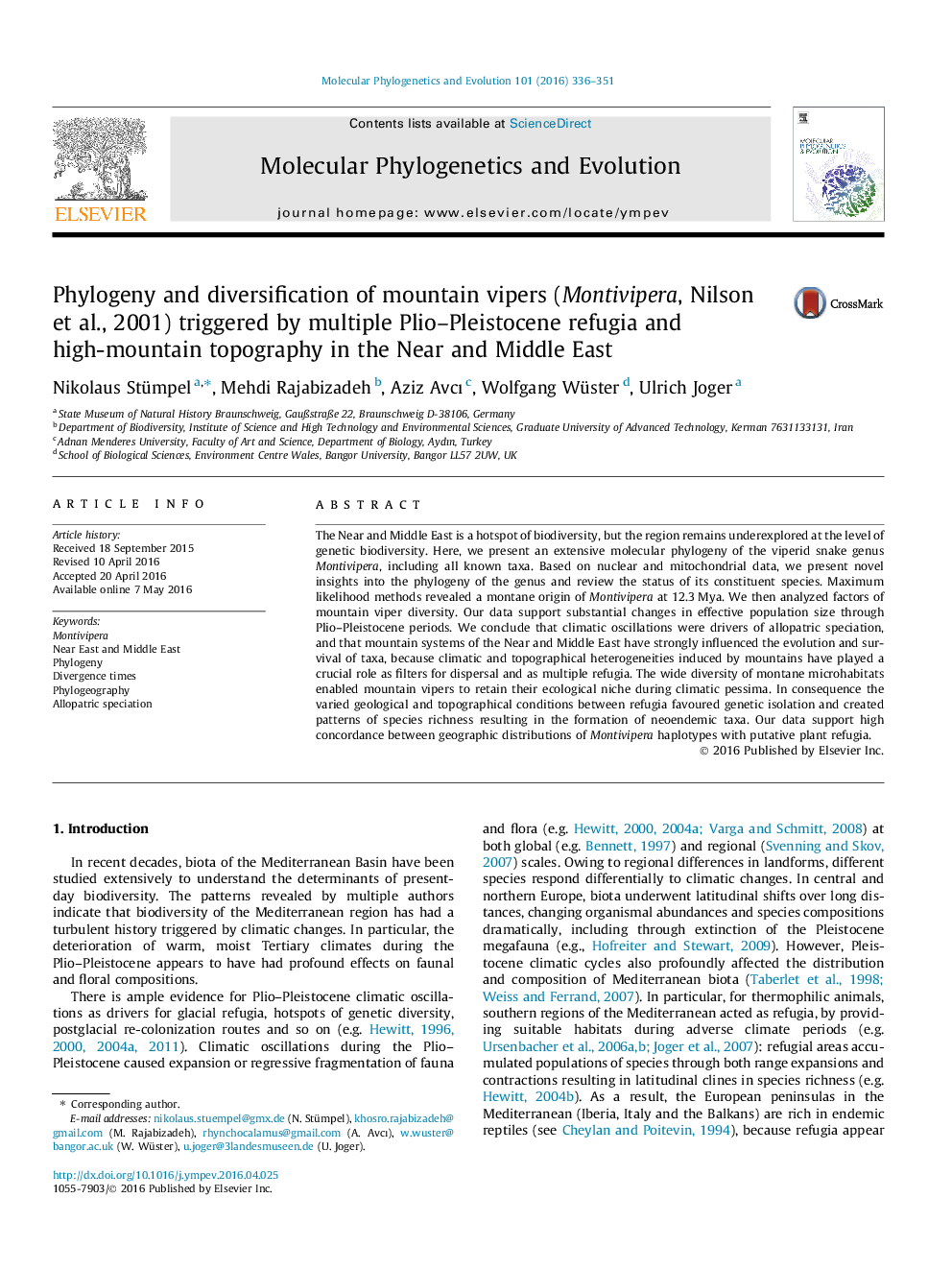| کد مقاله | کد نشریه | سال انتشار | مقاله انگلیسی | نسخه تمام متن |
|---|---|---|---|---|
| 5918448 | 1570796 | 2016 | 16 صفحه PDF | دانلود رایگان |

- We provide novel insights into the phylogeny of Montivipera and identify new cryptic taxa.
- Climatic oscillations during Plio-Pleistocene favoured genetic isolation and were drivers of allopatric speciation.
- Mountains have played a crucial role as filters for dispersal and as multiple refugia.
- We found high concordance between Montivipera haplotype distributions and plant refugia.
The Near and Middle East is a hotspot of biodiversity, but the region remains underexplored at the level of genetic biodiversity. Here, we present an extensive molecular phylogeny of the viperid snake genus Montivipera, including all known taxa. Based on nuclear and mitochondrial data, we present novel insights into the phylogeny of the genus and review the status of its constituent species. Maximum likelihood methods revealed a montane origin of Montivipera at 12.3Â Mya. We then analyzed factors of mountain viper diversity. Our data support substantial changes in effective population size through Plio-Pleistocene periods. We conclude that climatic oscillations were drivers of allopatric speciation, and that mountain systems of the Near and Middle East have strongly influenced the evolution and survival of taxa, because climatic and topographical heterogeneities induced by mountains have played a crucial role as filters for dispersal and as multiple refugia. The wide diversity of montane microhabitats enabled mountain vipers to retain their ecological niche during climatic pessima. In consequence the varied geological and topographical conditions between refugia favoured genetic isolation and created patterns of species richness resulting in the formation of neoendemic taxa. Our data support high concordance between geographic distributions of Montivipera haplotypes with putative plant refugia.
167
Journal: Molecular Phylogenetics and Evolution - Volume 101, August 2016, Pages 336-351